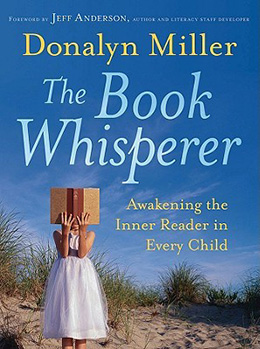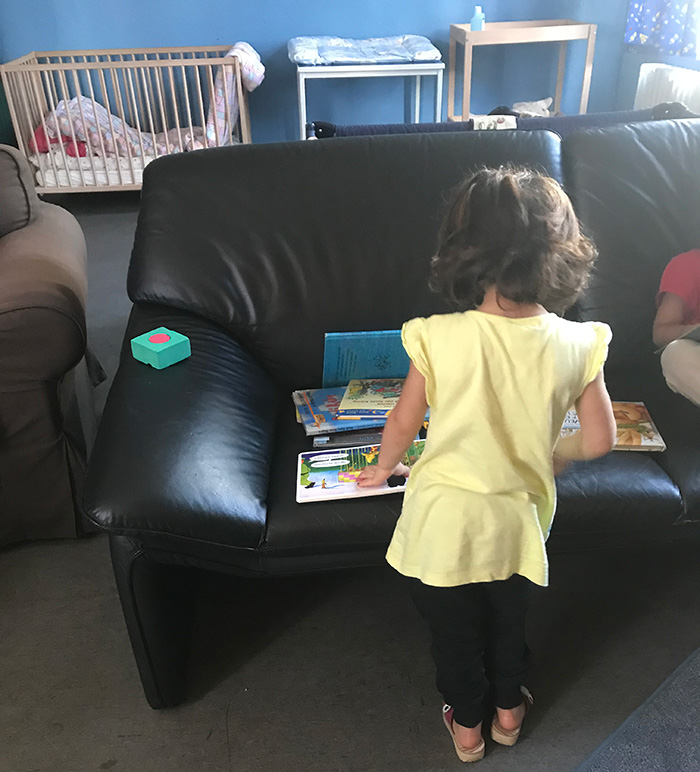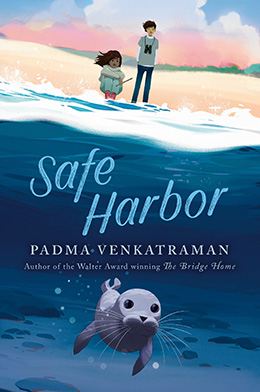Avi’s 2025 Summer Blog Series
Dr. Padma Venkatraman
From Avi: As I have for the last three summers, (summer of 2024, summer of 2023, summer of 2022) I’ve invited 13 admired authors to write for my blog for the next three months. I hope you’ll tune in each Tuesday to see who answered this year’s question, which we hope provides you with inspiration. And by the end of the summer, you’ll have new authors to follow!
What’s your favorite strategy for encouraging young people to read?
Creating a Safe Harbor for Stories
My favorite strategy for encouraging young people to read is based on work I did once, long ago, as head teacher of a small school in England; and then what I learned from my time as a volunteer working with children at an “asylum seekers center” in Germany. In both places, I created a safe harbor environment, where children could share the joy of reading together, without judgment.

In England, it was easier. I was head teacher, after all — and the parents were worried that their children weren’t reading enough or well enough. My solution was to institute a “reading time” every afternoon.
All “my” children sat together in a loose circle, choosing where they wanted to sit, and choosing whatever book they wanted to read. It was a mixed age group — ranging from six year olds to twelve year olds; I made sure we had books at different reading levels; and I encouraged the older children to read to the younger ones (in part so that the older children who weren’t confident of their reading skills would have an excuse to pick up a book that was at their reading level but that they might have worried was “babyish”).
As the weeks wore on, I encouraged the children to share a few words about what books they were reading. They were allowed to bring books from home or choose one from the classroom and take it home if they liked. Within a month, reading time was treasured by the students — and their parents, who were ecstatic at the remarkable change in their children’s reading habits.
At the asylum seekers center in Germany, I had a harder time. I was a volunteer, so I had to be careful what I said and how I acted. The center itself was rather a bleak place — a converted army barracks! There was an Alsatian at the gates and a barbed wire fence around the compound. In the long hallways were posters with information on how to get help if there was domestic violence and that sort of thing.
The classroom itself had shabby second-hand furniture — but the teachers had gone to great lengths to brighten up the place with cheerful decorations. They were incredibly dedicated, and they loved the children. They spent hours with them, not only in the classroom, but also taking them on field trips, to swim and cycle and walk nearby.
 Books, however, were not a priority. They were locked away in a small anteroom. When I asked why the books were inaccessible, I was told it was because the children would not handle the books well! I’d read Donalyn Miller’s The Book Whisperer and I marshaled some of her persuasive arguments. I also learned a great deal from Pernille Ripp’s comments, and I tried to impress the teachers with her wisdom, too. Soon, I was allowed to put some books on a table and invite the children to peruse them.
Books, however, were not a priority. They were locked away in a small anteroom. When I asked why the books were inaccessible, I was told it was because the children would not handle the books well! I’d read Donalyn Miller’s The Book Whisperer and I marshaled some of her persuasive arguments. I also learned a great deal from Pernille Ripp’s comments, and I tried to impress the teachers with her wisdom, too. Soon, I was allowed to put some books on a table and invite the children to peruse them.
The next challenge came from the children themselves. As refugees, they had all been through a great deal in their young lives, and it took a while before they could establish mutual respect, without comparing themselves to someone else or mocking others in the class for their reading choices! I began to read aloud to the group and engaged them in interactive activities that centered them. I encouraged them to make up their own stories or talk about or sing a song or do a drawing or craft inspired by the books we read.

After the group activity, the children would take turns, choosing a book and coming in pairs or alone to another room, where I created a safe harbor environment, playing soft, calming music, and listening to them read aloud, helping as needed, or reading aloud to them in some cases — without any judgment. And just as the rather privileged children in my British school had done, book love began to grow in these children who were living in such a harsh climate. They loved their time in the “reading room” where they could read books of their choice together, where they could spread and share their love for books with one another, without any pressure to demonstrate reading prowess.
So that’s my favorite reading strategy: to create a safe harbor where young people can dip into the ocean of story on their own terms.
Particulars
[photo: Connecticut Head Shots]
Dr. Padma Venkatraman is the internationally acclaimed author of Born Behind Bars, The Bridge Home (a Global Read Aloud), A Time to Dance, Climbing the Stairs and Island’s End, which have secured over 20 starred reviews and sold over ¼ million copies. Her latest novel, Safe Harbor, was called a “must read” in a starred review from School Library Journal. She is the winner of WNDB’s Walter Dean Myers Award for Outstanding Children’s Literature and numerous other prestigious awards. Discover more at Padma’s website, Diverse Verse (which she founded), or arrange a visit.

